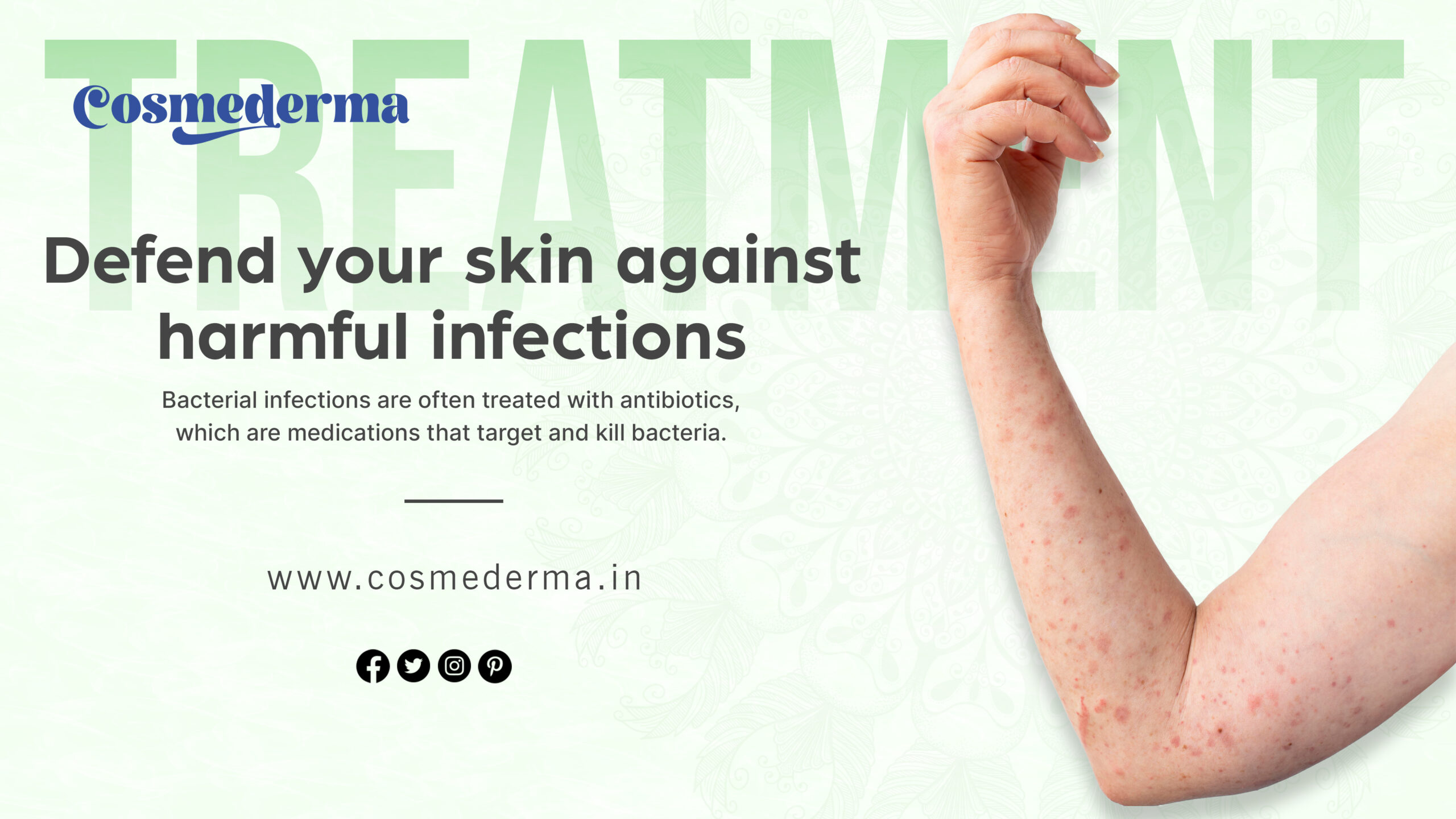Home » Bacterial Skin Infections
Overview
Skin is the largest organ on our body and the first line of protection against the environment. Microorganisms are naturally present on our skin and can also invade our system to cause skin infections. The skin infections can also be caused by the bacteria invading normal skin, or affecting a compromised skin barrier such as skin affected by atopic dermatitis, or surgical wound sites. The bacterial skin infections can range from mild and localized problems, such as impetigo or folliculitis, to more serious and potentially life-threatening conditions like cellulitis or necrotizing fasciitis.
There are a wide array of bacteria responsible for causing skin infections such as Streptococcus and Staphylococcus species. To treat the bacterial skin infections the mediicne or antibiotic can be applied topically or taken orally to fight the baterial infection. You can avoid the bacterial skin infections by taking good care of yourself and preventing any skin injuries.


Causes and Risk Factors
Bacterial skin infections are caused by the multiplication of bacteria on or within the skin. The primary causes and risk factors of bacterial skin infections include the following:
Environmental Factors: The exposure to environmental factors such as swimming pools, hot tubs, or natural bodies of water increases your chances of catching bacterial skin infections.
Insect Bites: If you have been bitten by an insect it can also introduce bacteria into your skin causing bacterial skin infections.
Poor Hygeine: Another key factor that increases your chances of getting bacterial skin infections is poor hygiene that can make your skin a breeding ground for the infection causing bacteria.
Sharing Personal Items: By sharing personal items such as towels, razors, or gym equipment you can risk catching bacterial skin infection from another person.
A bacterial skin infection caused when an injury or wound gets infected with a i bacteria causing symptoms such as redness
The infection can cause symptoms suh as small, red, pimple-like bumps at the base of hair follicles.
A highly infectious bacterial skin infections commonly seen in children. It is caused by Streptococcus or Staphylococcus bacteria.
A bacterial skin infection affecting the upper layer of the skin. It is caused by the Streptococcus bacteria causing a raised
An abscesses is localized collection of pus that can form anywhere on or in the body, including the skin.
Types of Bacterial Skin Infections
There are different types of bacterial cell that can cause different types of bacterial skin infections. The different types of bacterial skin infections noticed are mentioned as follows:
Cellulitis: A bacterial skin infection caused when an injury or wound gets infected with a i bacteria causing symptoms such as redness, warmth, swelling, and tenderness in the affected area.
Folliculitis: An infection of hair follicles caused by Staphylococcus bacteria. The infection can cause symptoms suh as small, red, pimple-like bumps at the base of hair follicles.
Impetigo: A highly infectious bacterial skin infections commonly seen in children. It is caused by Streptococcus or Staphylococcus bacteria.
Erysipelas: A bacterial skin infection affecting the upper layer of the skin. It is caused by the Streptococcus bacteria causing a raised, red rash with well-defined borders.
Abscesses: An abscesses is localized collection of pus that can form anywhere on or in the body, including the skin. It can be caused due to infection or the presence of a foreign body.

Solution From Cosmederma
-
Lamovate MXRated 0 out of 5
-
AvedermRated 0 out of 5
-
XYTERRated 0 out of 5
-
CLIDIS- NRated 0 out of 5
-
CLIDIS-BRated 0 out of 5
-
ServodermaRated 0 out of 5
-
Lamovate NMRated 0 out of 5
-
PrismRated 0 out of 5
-
ClidisRated 0 out of 5
-
Fuzilax BRated 0 out of 5
-
FuzilaxRated 0 out of 5
-
Aclix LbRated 0 out of 5
-
Azithromycin 250 mgRated 0 out of 5
-
Azithromycin 500mgRated 0 out of 5













